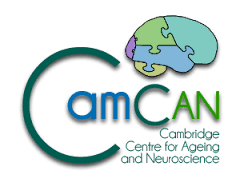CBSU bibliography search
To request a reprint of a CBSU publication, please
click here to send us an email (reprints may not be available for all publications)
The role of GABA in semantic memory and its neuroplasticity
Authors:
Jung, J., LAMBON RALPH, M.
Reference:
eLife
Year of publication:
In Press
CBU number:
8929
Abstract:
A fundamental aspect of neuroscience is understanding neural functioning and plasticity of the brain. The anterior temporal lobe (ATL) is a hub for semantic memory, which generates coherent semantic representations about the world. GABAergic inhibition plays a crucial role in shaping human cognition and plasticity, but it is unclear how this inhibition relates to human semantic memory. Here, we employed a combination of continuous theta burst stimulation (cTBS), MR spectroscopy and fMRI to investigate the role of GABA in semantic memory and its neuroplasticity. Our results demonstrated that the inhibitory cTBS increased regional GABA levels in the ATL and decreased ATL blood-oxygen level-dependent (BOLD) activity during semantic processing. Importantly, changes in GABA levels were strongly associated with changes in regional activity induced by cTBS. These results suggest that GABAergic activity may be the mechanism by which cTBS induces after effects on cortical excitability. Furthermore, individuals with better semantic performance exhibited selective activity in the ATL, attributable to higher concentrations of inhibitory GABA, which can sharpen distributed semantic representations, leading to more precise semantic processing. Our results revealed a non-linear, inverted-U-shape relationship between GABA levels in the ATL and semantic performance, thus offering an explanation for the individual differences in the cTBS effect on task performance. These results provide neurochemical and anatomical specificity in shaping task-related cortical activity and behaviour. Understanding the link between neurochemistry and semantic memory has important implications for understanding individual differences in semantic behaviour and developing therapeutic interventions for patients with semantic impairments.
URL:

 MRC Cognition and Brain Sciences Unit
MRC Cognition and Brain Sciences Unit

